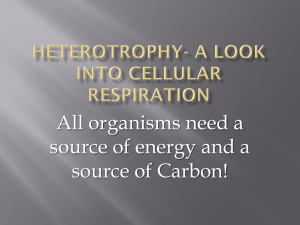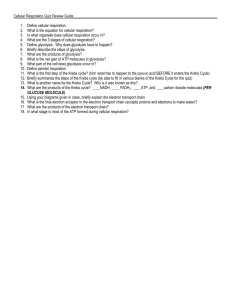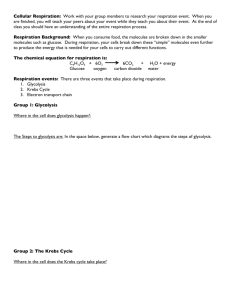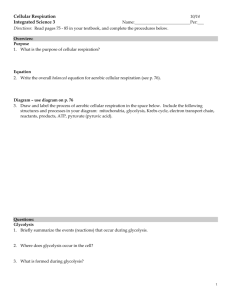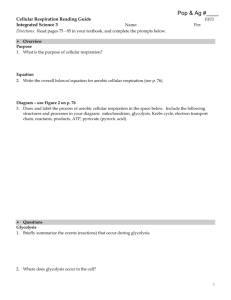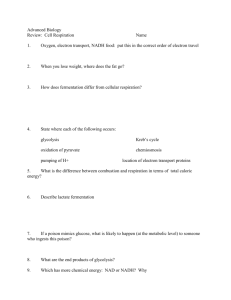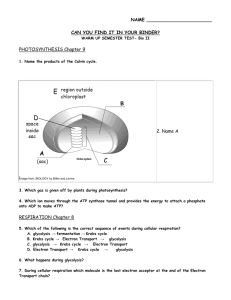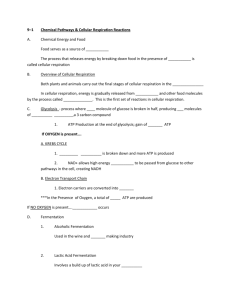Cell Respiration Web Tutorial
advertisement
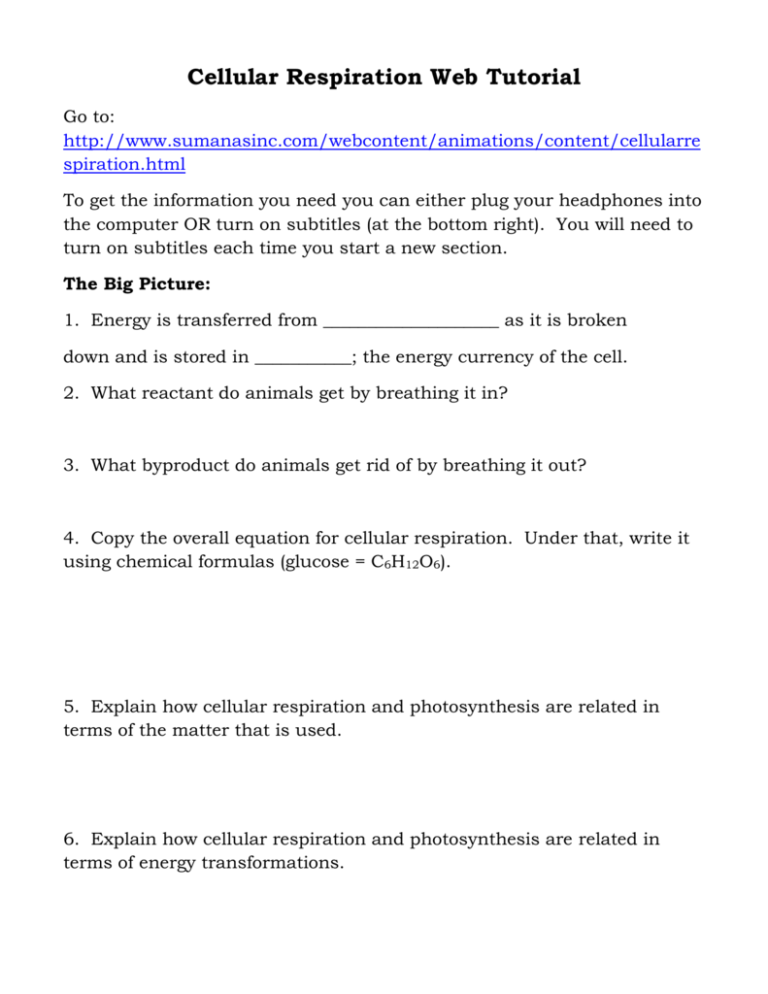
Cellular Respiration Web Tutorial Go to: http://www.sumanasinc.com/webcontent/animations/content/cellularre spiration.html To get the information you need you can either plug your headphones into the computer OR turn on subtitles (at the bottom right). You will need to turn on subtitles each time you start a new section. The Big Picture: 1. Energy is transferred from ____________________ as it is broken down and is stored in ___________; the energy currency of the cell. 2. What reactant do animals get by breathing it in? 3. What byproduct do animals get rid of by breathing it out? 4. Copy the overall equation for cellular respiration. Under that, write it using chemical formulas (glucose = C6H12O6). 5. Explain how cellular respiration and photosynthesis are related in terms of the matter that is used. 6. Explain how cellular respiration and photosynthesis are related in terms of energy transformations. 7. List the 3 steps of cellular respiration. Glycolysis 8. Where does glycolysis occur? 9. What happens to the glucose during the energy investment phase? 10. What is the other name for a proton? 11. What is the difference between NAD+ and NADH? 12. What does the 1 molecule of glucose get broken into during glycolysis? 13. What other molecules are products of glycolysis? 14. What is the ATP net yield of Glycolysis? Krebs Cycle 15. Where does the Krebs cycle take place? 16. Pyruvate isn’t the starting material for Krebs. What is it converted into and what other molecules are made in the process? 17. Why is this process called a cycle? 18. What happens to all of the 6 carbons that were in your glucose molecule? 19. What other molecules are produced in this cycle? 20. What do the NADH and FADH2 molecules do with the electrons they gained during Krebs? 21. Why does Krebs stop if the ETC does not have the oxygen it needs to function? 22. Why is an increase in the number of mitochondria beneficial for aerobic exercise? Electron Transport Chain 23. Where are the proteins involved in the electron transport chain? 24. What is the function of the electrons carried by NADH and FADH2? 25. What is the result of the electron transfer and the pumping of H+? 26. What form of energy is the concentration gradient? 27. Oxygen is often referred to as the “final electron acceptor” in cellular respiration. Why is this a good title for oxygen’s role in the electron transport chain? 28. What is the purpose of the proton gradient in the electron transport chain? 29. What happens when there is a lack of oxygen? 30. What happens to the NAD+ that donated their electrons to the ETC? 31. Trace the energy transformation from glucose to ATP. 32. How does cyanide block the function of the electron transport chain?
